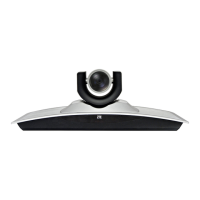AppendixA
Introductionto
VideoconferencingSystem
TableofContents
ŸVideoconferenceSystemOverview........................................................................A-1
ŸVideoconferenceNetworkModes...........................................................................
A-1
ŸVideoconferencingConstruction............................................................................A-3
A.1VideoconferenceSystemOverview
Videoconferencesystememploysbothcommunicationtechnologyandnetwork
technologytoimplementthereal-time,bidirectionalandinteractiveremotecommunication
betweenseparatesites.
Itallowstwoormoresitestoexchangevideoimages,voice,documentsandpresentations
inrealtime,justlikebeinginthesameconferenceroom.Videoconferencesystemprovides
anewtooltoimproveworkefciencyanddecreasecostforremotecommunication.
Videoconferencesystemarewidelyusedinmanyeldssuchasbusinessconference,
remotecollaboration,distanceeducation,tele-medicineandemergencycommand.
A.2VideoconferenceNetworkModes
Thissectiondescribesvideoconferencesystemsbasedontwodifferentnetworkmodes:
ITU-TH.320andITU-TH.323.
ITU-TH.320
ITU-TH.320modeisavideoconferencesystembasedonP×64Kdigitaltransmission
network,ITU-TH.320networkmodeappliesITU-TH.221mediamultiplexingframeformat
andwasoncethemostwidelyusednetwork.ThetypicalapplicationofITU-TH.320is
E1dedicatedline,N-ISDNwhichcorrespondtothetwocommonnetworkingapplications:
digitaltransmissionnetworkandN-ISDNnetwork.
ldigitaltransmissionnetworkwithprimaryrateof1920Kbit/scanprovidehigher
transmissionrate,bettervideo/audioquality,andmorestableoperationcompared
withothernetwork.E1interfaceisneededinthisnetworkingmode.
lN-ISDNasintegratedservicesdigitalnetworkhastwostandardinterfaces:basicrate
interfaceBRIandprimaryrateinterfacePRI.N-ISDNchannelstructureisdividedinto
2B+Dand30B+D.Thisnetworkingisveryexibleandwithsmallcommunication
A-1
SJ-20120814152402-001|2012-08-30(R1.0)ZTEProprietaryandCondential

